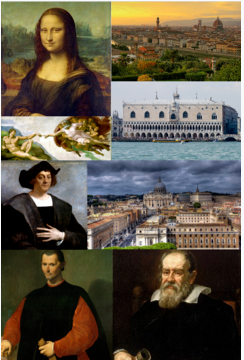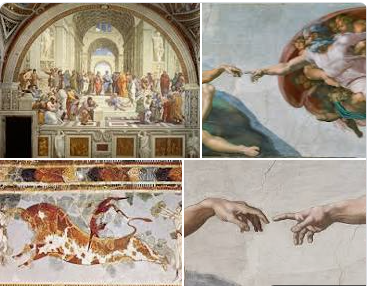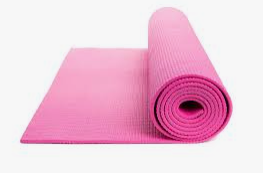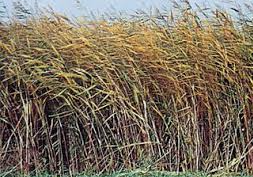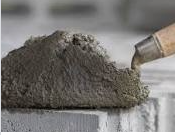Official 35 - lecture 3
listen to part of lection in a art history class.
the professor has been discussing about the Italian Renaissance.
the Italian Renaissance was a period in Italian history covering the 15th and 16th centuries.
In our discussion of Italian Renaissance painting form 1400s and early 1500s, we've looked at some masterpieces on canvas and on wood, but our discussion will be grossly incomplete without talking frescos.
gross: very obvious and unacceptable
grossly
fresco is basically painting done on the interior of building on walls and ceilings.
they weren't invented during the Renaissance.
If you remember we looked briefly at fresco painting way back in our discussion of ancient Romans and ancient Roman art at a few weeks ago.
some informal usage of 'way':
adv. very, to emphasize degree or separation
adv. place, in the way of.
But it was much later during the Renaissance that the term fresco was commonly used.
It's an Italian word that means literally fresh.
literally: in a literal sense or manner
in effect: virtually: used in an exaggerated way to emphasize a statement or description that is not literally true or possible.
To explain that, we have to get specific about technique.
Back then, most buildings had stone and brick walls with highly irregular surfaces.
They weren't smooth.
practice these pronunciations
it was ..
it wasn't ...
they weren't ...
they were ...
the wall weren't completely water proof
moisture could seep in.
to flow or pass slowly through fine pores or small openings.
building were often damp.
slightly wet especially in a way that is not pleasant or comfortable.
there was no way to really control humidity inside buildings in those days.
so because fresco are done inside building on walls, the walls needed to be prepared before work could begin.
so for example, sometimes, thin reed mats were stuck onto the walls, so these thin reed mats would be like additional layer between the original part of the wall and the frescos.
mat: yoga mat
reed:
the painted part of walls that were done over them.
the reed mats could smooth out the surface of a rough wall, or could also provide that all important protection from moisture or do both.
so it was the wall, then the mats, then plaster on top of the mat, then the fresco painted on the plaster.
protective plaster, plaster: plaster is a building material used for the protective or decorative coating of walls and ceilings.
other time through, plaster was applied directly to the walls, a thick layer of plaster to fill in spaces between the bricks to smooth out the wall surface for painting the fresco.
you see?
plater is whitish kind of paste, a mixture of lime, water and sand.
paste: 糊状物
whitish: somewhat white; tending to white
after you spread plaster on a surface, it'll harden, like cement does.
Cement is a finely milled mineral powder, usually grey in color.
but as I said fresco means fresh.
that because to create a fresco, the plaster has to applied very soon after the plater has been spread over a surface right on the wet fresh plaster.
by doing this, the painting actually becomes part of the plaster.
finishing a painting before the plaster dry was a really challenge for the fresco painters.
the technique of creating frescos was d over time, and eventually perfected during the Renaissance, a time when immense buildings were being erected as symbols of wealth and power.
very large buildings which people wanted decorated it on the inside as well the outside.
the owners of these grand buildings wanted to decorated the walls to reflect their own affluence and prestige.
affluence: abundance of property
prestige: respect and admiration given to someone or something.
now, few people would argue with the greatness of artist from that period, Michelangelo, Raphael
but there is this popular mental image people have of an artistic genius producing a masterpiece in total solitude.
that idea is fine for canvas painting and other small works, but a practical reality of fresco painting in the Renaissance was collaboration.
the sheer dimensions of the surfaces involved, plus the physical properties of the plaster, meant it very inevitable that Renaissance artists would rely on assistants, apprentices they were called, to help create their masterpieces.
apprentices is system for training new generation of practitioners of a trade or profession.
Electricians are often trained through apprenticeships.
Artists had to planned the work carefully, divided it into serval days.
each day was a repetition of the same technical process.
apprentices mix paints, prepare the plaster, spread it on one section of the all or ceiling, then finally paint on the wet plaster.
this had to be done within few hours before the plaster dried.
they go through that whole process in one day on one section.
the next day they'd move on and do it again on an adjacent part.
so any fresco commissioned to an artist was, for practical reasons, commissioned to a whole team.
commission: an instruction, command or role given to a person or group
I'm not saying a genius like Michelangelo lack the skill to paint the enormous ceiling of The Sistine Chapel by himself.
but he probably would have to live until he was 200 years old to finish the ceiling's fresco like that without anyone's help.
so although we aren't sure exactly how many people took active role in painting the ceiling, we can see area which are really inferior to Michelangelo's work that mush have been painted by his apprentices.
inferior: lower in rank, status, or quality.
